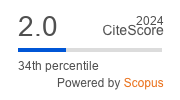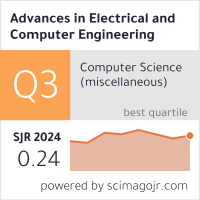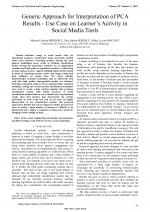| 2/2018 - 4 |
Generic Approach for Interpretation of PCA Results - Use Case on Learner's Activity in Social Media ToolsMIHAESCU, M. C. |
| Extra paper information in |
| Click to see author's profile in |
| Download PDF |
Author keywords
data engineering, knowledge representation, machine learning, social network services, social computing
References keywords
analysis(13), principal(11), component(10), learning(5), education(5), student(4), social(4), review(4), research(4), advanced(4)
Blue keywords are present in both the references section and the paper title.
About this article
Date of Publication: 2018-05-31
Volume 18, Issue 2, Year 2018, On page(s): 27 - 34
ISSN: 1582-7445, e-ISSN: 1844-7600
Digital Object Identifier: 10.4316/AECE.2018.02004
Web of Science Accession Number: 000434245000004
SCOPUS ID: 85047847074
Abstract
Intensive usage of social media tools for educational purposes transformed many previously tackled issues from classical e-Learning systems. Among the most general challenging issues reside in building classification models having the performed activities set as independent variables and final grade as dependent variable. A critical step in data analysis process regards building interpretable models in terms of explaining feature values and ranges along with their influence on target class. We asked whether dimensionality reduction techniques may be effectively used such that high quality interpretable models are obtained. Principal component analysis (PCA) dimensionality reduction technique, scaling and several classical classification techniques were used to create a data analysis pipeline that produces classification models with similar accuracy of initial classification models built on raw available data. Experimental results show that features that characterize the activity performed on each social tool and on all tools are highly interpretable in our classification context. The proposed approach is flexible and can be adapted to similar practical use cases in which a large number of features is difficult to be interpreted and a digest is required as being more useful for bringing a better insight on data. |
| References | | | Cited By |
Web of Science® Times Cited: 0
View record in Web of Science® [View]
View Related Records® [View]
Updated today
SCOPUS® Times Cited: 1
View record in SCOPUS® [Free preview]
View citations in SCOPUS® [Free preview]
There are no citing papers in the CrossRef Cited-by Linking system.
Disclaimer: All information displayed above was retrieved by using remote connections to respective databases. For the best user experience, we update all data by using background processes, and use caches in order to reduce the load on the servers we retrieve the information from. As we have no control on the availability of the database servers and sometimes the Internet connectivity may be affected, we do not guarantee the information is correct or complete. For the most accurate data, please always consult the database sites directly. Some external links require authentication or an institutional subscription.
Web of Science® is a registered trademark of Clarivate Analytics, Scopus® is a registered trademark of Elsevier B.V., other product names, company names, brand names, trademarks and logos are the property of their respective owners.
Faculty of Electrical Engineering and Computer Science
Stefan cel Mare University of Suceava, Romania
All rights reserved: Advances in Electrical and Computer Engineering is a registered trademark of the Stefan cel Mare University of Suceava. No part of this publication may be reproduced, stored in a retrieval system, photocopied, recorded or archived, without the written permission from the Editor. When authors submit their papers for publication, they agree that the copyright for their article be transferred to the Faculty of Electrical Engineering and Computer Science, Stefan cel Mare University of Suceava, Romania, if and only if the articles are accepted for publication. The copyright covers the exclusive rights to reproduce and distribute the article, including reprints and translations.
Permission for other use: The copyright owner's consent does not extend to copying for general distribution, for promotion, for creating new works, or for resale. Specific written permission must be obtained from the Editor for such copying. Direct linking to files hosted on this website is strictly prohibited.
Disclaimer: Whilst every effort is made by the publishers and editorial board to see that no inaccurate or misleading data, opinions or statements appear in this journal, they wish to make it clear that all information and opinions formulated in the articles, as well as linguistic accuracy, are the sole responsibility of the author.



